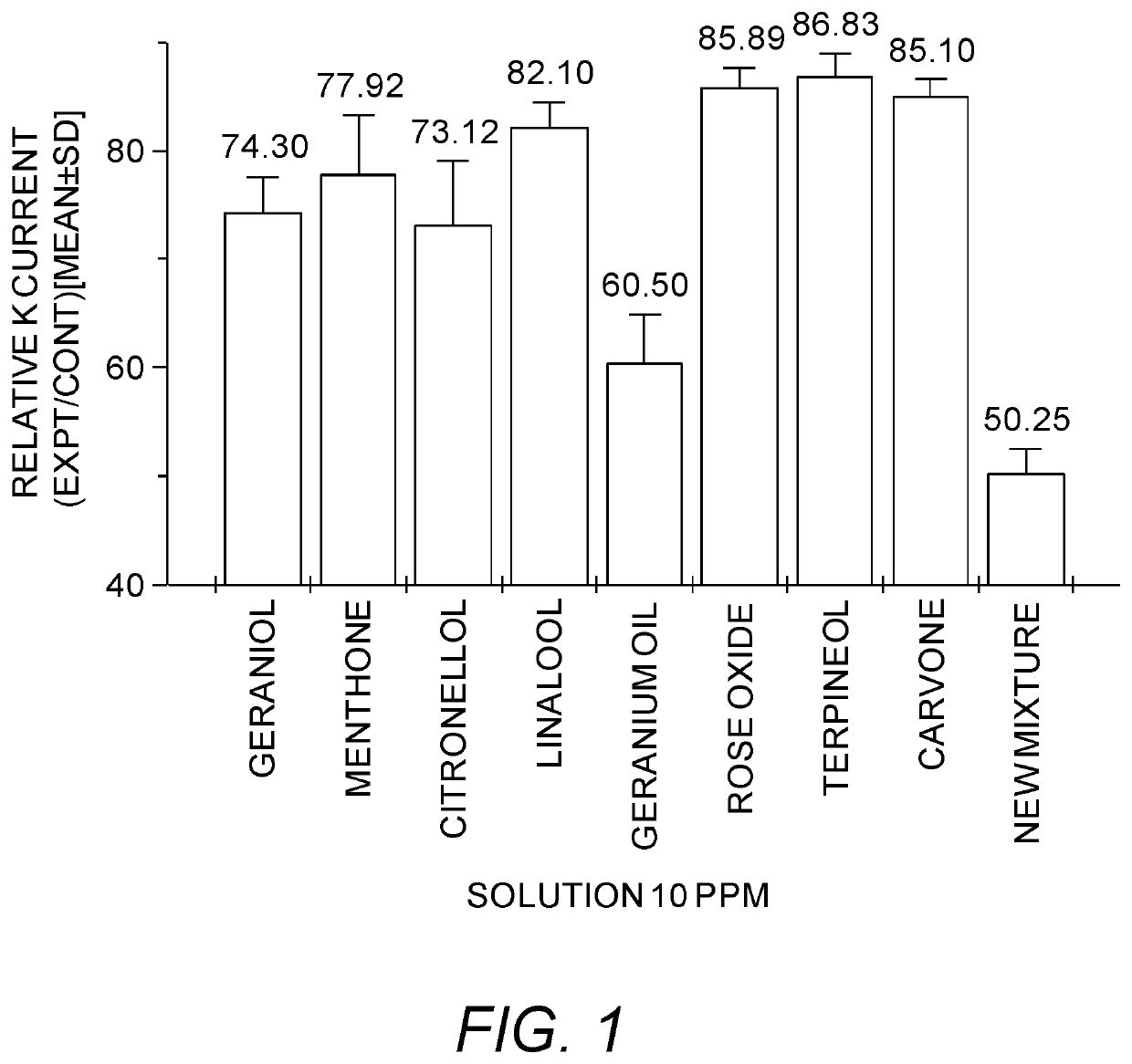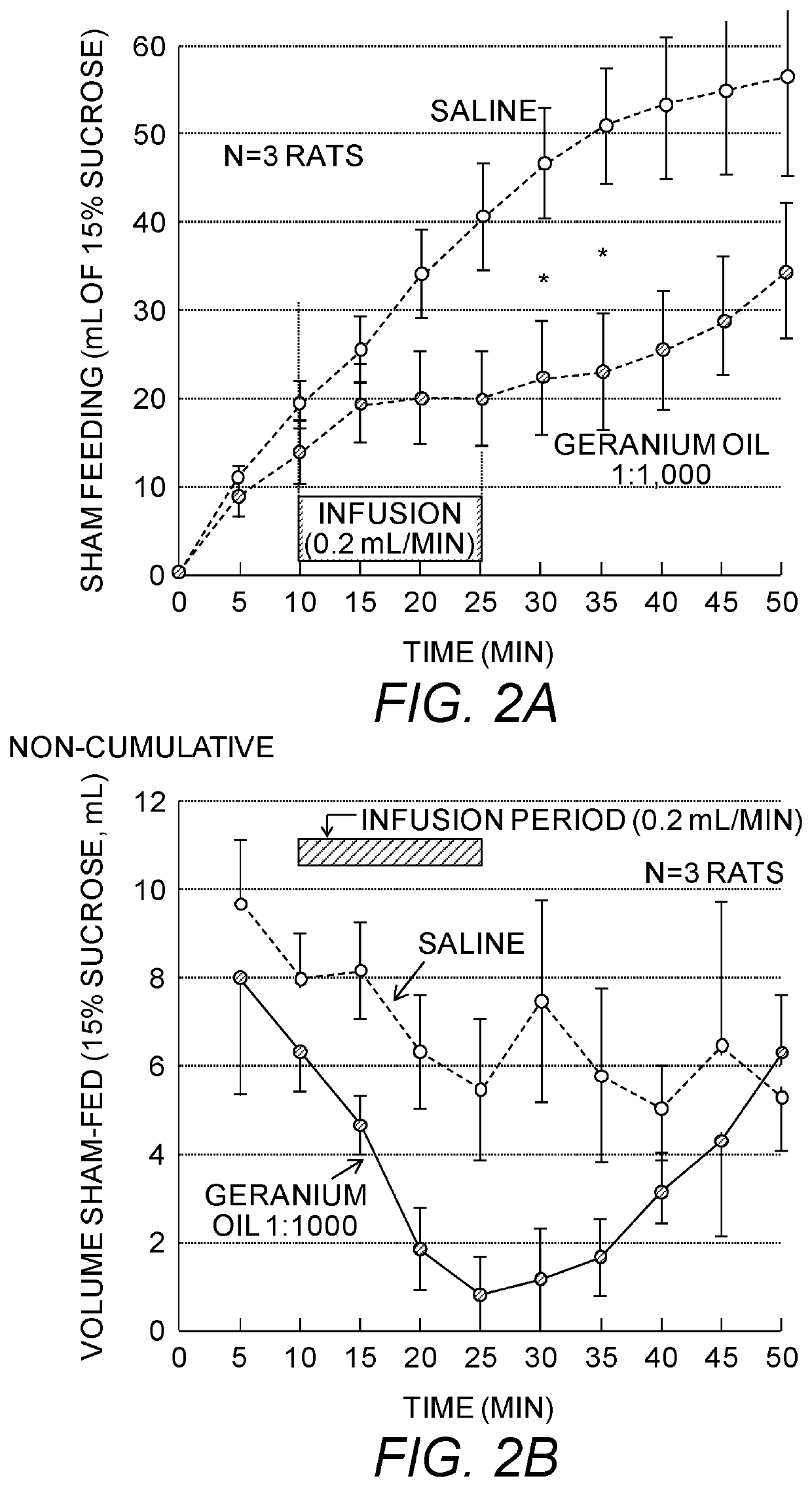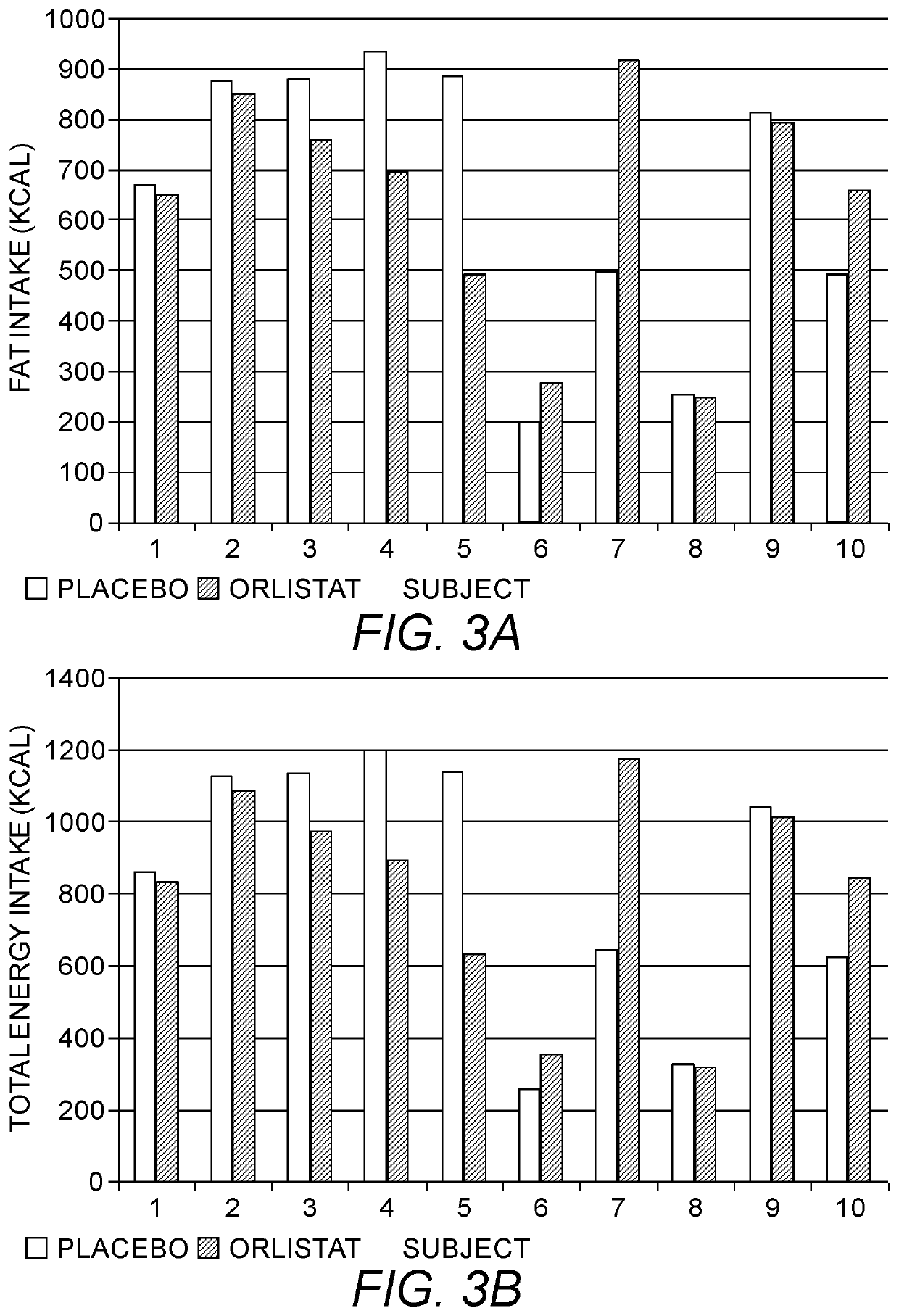Methods for treating obesity
a technology for treating obesity and obesity, applied in the field of obesity treatment methods, can solve the problems of ineffective long-term behavior modification for a significant portion of patients, high cost, and high side effects, and achieve the effects of reducing body weight and/or food intake, and effective and convenient methods for treating or preventing obesity
- Summary
- Abstract
- Description
- Claims
- Application Information
AI Technical Summary
Benefits of technology
Problems solved by technology
Method used
Image
Examples
example 1
Activation of Duodenal Fatty Acid-Sensitive Taste Receptors by Geranium Oil
[0064]It was previously demonstrated that 10 ppm geranium oil inhibits the taste receptor on the tongue by 60.5% (FIG. 1). Importantly, it has been shown that similar fatty acid-sensitive taste receptors are present in the mucosa of the small intestine, including the duodenum. To demonstrate that activation of these intestinal taste receptor cells can suppress appetite and food intake, geranium oil or saline were infused directly into the duodenum of sham-feeding rats. A fistula was made from the stomach to the abdominal wall in a rat, so that the rat will continually drink a 15% sucrose solution that is collected through a tube. Geranium oil diluted 1:1000 in water was tested in 3 sham-fed rats (FIGS. 2A and 2B). The results showed that duodenal infusion at 0.2 mL / min of a geranium oil solution for 15 minutes significantly attenuated consumption of the 15% sucrose solution. These results demonstrate that ger...
example 2
Orlistat Mouthwash Decreases Food and Energy Intake
[0065]The effect of orlistat mouthwash (OM) on fat intake was determined by a double-blind, placebo controlled, randomized and balanced crossover study performed on 10 healthy individuals between 18 and 70 years of age and a body mass index (BMI) between 25 and 35 kg / m2.
[0066]Prospective subjects were recruited during a screening visit in which they completed a medical questionnaire, a menstrual questionnaire to determine the ideal study period in females (luteal phase) and a 3-factor eating questionnaire (measuring dietary restraint, inhibition and hunger). Inclusion criteria included healthy male and females between 18-70 years of age with a BMI between 25-35 kg / m2. Exclusions included pregnancy, a restraint score of greater than 13 or a significant aversion to the test food (as determined by a sample tasting). Also excluded were any subjects taking diabetic medications, systemic glucocorticoids or any agent that was known to caus...
PUM
 Login to View More
Login to View More Abstract
Description
Claims
Application Information
 Login to View More
Login to View More - Generate Ideas
- Intellectual Property
- Life Sciences
- Materials
- Tech Scout
- Unparalleled Data Quality
- Higher Quality Content
- 60% Fewer Hallucinations
Browse by: Latest US Patents, China's latest patents, Technical Efficacy Thesaurus, Application Domain, Technology Topic, Popular Technical Reports.
© 2025 PatSnap. All rights reserved.Legal|Privacy policy|Modern Slavery Act Transparency Statement|Sitemap|About US| Contact US: help@patsnap.com



